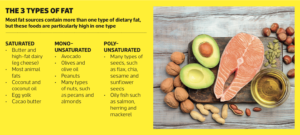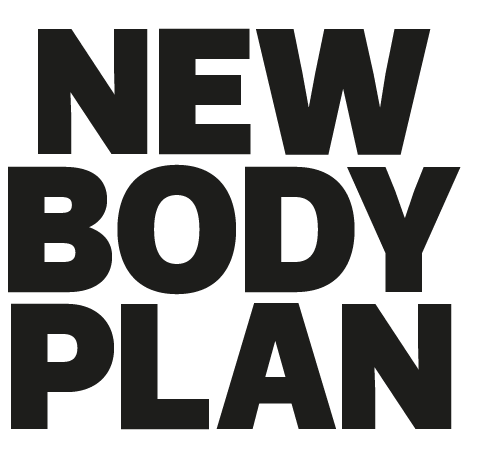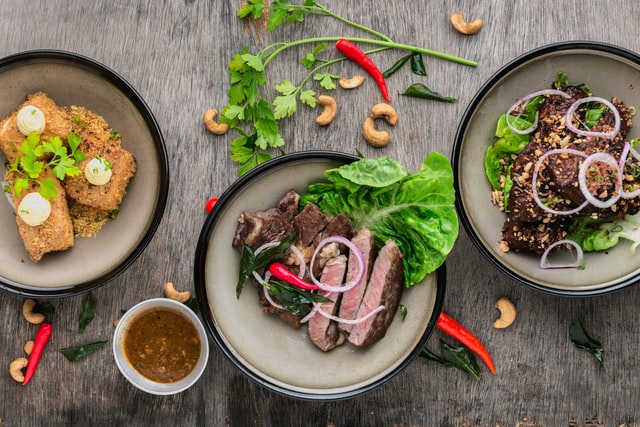The macronutrients that make up the food you eat
Here’s a guide to the macronutrients and micronutrients in the food you eat – and why they’re so important – so you can start eating for a leaner and healthier body
Every single thing we eat is a combination of different compounds. Most natural, unprocessed food consists primarily of water: a banana is 75% water, a potato is 79% water and a chicken breast, which most people think of as pure protein, can be up to 75% water. But this isn’t actually that surprising when you consider you are around 70% water – so you’re more H20 than anything else!
After water the next most common compound in natural foods will be a macronutrient – there are three of them – or a combination of macronutrients along with certain micronutrients.
What are macronutrients?
Macronutrients are the three main groups of chemical compounds that make up the food we eat. They are protein, fats and carbohydrates.
What are micronutrients?
Micronutrients are chemical compounds such as vitamins, minerals and phytonutrients (plant-based nutrients) in food. They are found in much smaller quantities than macronutrients, and we only need them in very small amounts.
Protein
After water, most of what makes you, well, you is made from proteins, and all proteins are made from amino acids. There are many types of amino acid, most of which your body can manufacture itself when required, but there are nine amino acids your body can’t synthesise. They’re called “essential amino acids” and you must get them from food. Most foods contain at least small (or “trace”) amounts of protein, but these are some of the most protein-rich foods.
Animal sources of protein
• Poultry (chicken, turkey, duck, goose) and eggs
• Red meat (beef, pork, lamb)
• Wild game (venison, rabbit, pheasant)
• Fish and shellfish
• Dairy (milk, cheese, yogurt)
Plant sources of protein
• Beans and legumes
• Tofu, tempeh and other soy products
• Nuts and seeds (though these are generally much higher in fat than protein)
• Some grains such as quinoa, amaranth and wild rice (though these are much higher in carbohydrates than protein)
How much protein do I need a day?
A good target is about 0.8g-1g of protein per kilogram of bodyweight per day, but you may need more if you’re active, older, pregnant or breastfeeding, or ill or injured.
To find your perfect transformation plan, take the New Body quiz!
Take the New Body quiz!
Carbohydrates
There are many types of carbohydrates and they’re mainly found in plant-based foods. Some carbs are very simple molecules, such as sugars, which are the most basic form. Others are much more complicated and are called complex carbohydrates. Starches, which are found in potatoes and beans, are one type of complex carb, as is fibre.
The more “simple” the carbohydrate, the easier it is to digest and absorb. In general, when eating for better health and fitness you want to prioritise consuming complex carbs because they are slower-digesting and more nutrient-rich than simple carbs.
Our bodies can’t completely break down some types of complex carbs, such as insoluble fibre or resistant starch, but the bacteria in our gut love it and make other beneficial compounds from it. Fibre and resistant starch are often known as “prebiotics”: they’re food sources that nourish our “good” gut bacteria. Fibre also helps move things through our intestinal tract.
Higher-fibre foods include fruits and vegetables, wholegrains, beans and legumes, and nuts and seeds, while resistant starch is found in beans, green bananas and many other plant-based foods.
Best sources of fibre and micronutrient-rich carbs
• Sweet and starchy vegetables (winter squashes, beetroot)
• Starchy tubers (potatoes, sweet potatoes, yams)
• Wholegrains (rice, wheat, oats)
• Beans and legumes
• Fruit
How many carbs do I need a day?
That depends on myriad factors, including your activity levels: you need more carbs if you are physically active and/or trying to build muscle. While some people do benefit from a lower-carb diet, most people look, feel and perform better from eating at least some carbs, especially the nutrient-rich, higher-fibre types.
Fats
The main three types of dietary fat are saturated, monounsaturated and polyunsaturated (see below). They differ from one another by the number and frequency of the carbon atoms that bond them, but you don’t need to worry about that! You just need to know that fats are an essential macronutrient and you need to consume them for optimal health. That’s one reason why very low-fat “detox diets” make you look and feel so bad!

How much fat do I need a day?
Most people do best with 25-35% of their total daily calories coming from a wide variety of healthy fat sources. Omega-3 fatty acids, particularly EPA and DHA, are special types of fats found in oily fish, seafood and some plant sources. They can help you lose weight, boost brain function, reduce inflammation, and improve both your physical and mental health – they’re all-round performers!
You may have noticed that processed cooking oils, margarine and cooking sprays don’t appear here and with good reason.
Most “long life” cooking oils and margarines are heavily processed and contain types of fat called “trans fats” that aren’t found in nature, so your body doesn’t know how to process them. Research increasingly suggests trans fats contribute to many health problems.
To find your perfect transformation plan, take the New Body quiz!
Take the New Body quiz!
Micronutrients
Vitamins and minerals come in many forms and what we think of as a “vitamin” or a “mineral” is actually a group of molecules that are chemically similar, but sufficiently different to do different jobs in the body. For example “vitamin A” is actually a family of molecules, and the carotenoid forms of vitamin A (such as beta-carotene) are water-soluble, found mainly in plants (such as carrots), and not very well absorbed by the body; while the retinoid forms of vitamin A are fat-soluble, found mostly in animal foods (such as egg yolks) and are well absorbed.
We absorb minerals such as calcium, iron and magnesium from dairy and meat better than from leafy greens, which have them in harder-to-digest forms. This is one reason why it’s important to eat a wide variety of foods: each food has a unique chemical “fingerprint” of micronutrients that contributes to our good health.
You may think taking a multivitamin or multi-mineral supplement helps you avoid deficiencies, but taking more vitamin and/or mineral pills is not usually better or healthier. Instead, focus on improving the quality and variety of your food choices so that you get your vitamins and minerals in the form that nature intended.

To find your perfect transformation plan, take the New Body quiz!
Take the New Body quiz!

